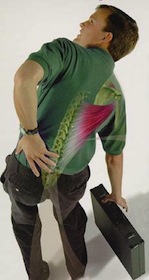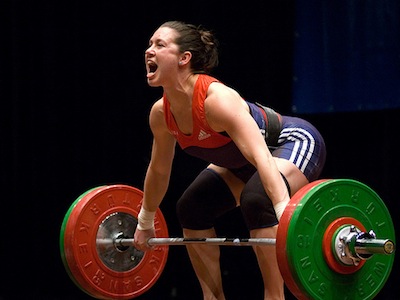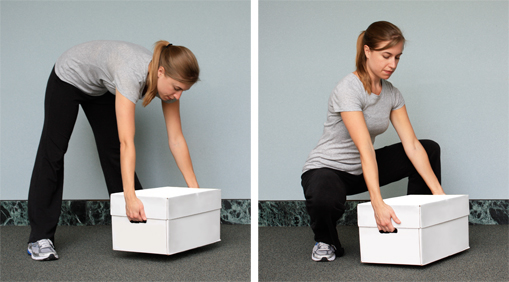
Most people presenting in our Manly Chiropractic office believe that their low back pain was caused by a single incident. However, this is seldom the case.
Most often people’s low back pain is caused by the accumulation of minor repetitive trauma from poor movement patterns and minor lifting strains.
Low back injuries such as lumbar disc herniations also known as “slipped discs” are caused by repeated of prolonged full flexion (bending) of the lumbar spine. (This mechanism has been discussed in a previous blog post the growing burden of low back pain.)

Many low back injuries that we see in our Manly chiropractic office could often be prevented by following some very basic but important rules:
1. Keep a straight spine.
2. Bend from the hips and not the back.
3. If lifting a weight, bring the weight close to the body.
4. Take regular postural breaks every 20 mins at work to break up long periods of sitting.
For lifting light objects, golfers have discovered a great spine-sparing lifting posture. As they bend down to pick up the ball from the hole, they will lift one leg to act as a counterweight which will assist as they rotate the upper body back into the upright position. This is great around the home when we have to pick up small and light objects (generally children’s toys!). This movement pattern not only keeps the spine straight, but allows the person to utilise their hips in the movement.
 NB Chiro’s Own Professional Golfer Fabienne In-Albon
NB Chiro’s Own Professional Golfer Fabienne In-Albon
For objects that are more heavy, we can learn from Olympic weight lifters. To gain maximal strength while lifting extremely heavy barbells the athlete will lock their spine in neutral. To lift they will then emphasize rotation about the hips. In reality, aim to keep the weight of any object as close to your body as possible. Then you lift up through your buttocks and thighs, rotating around the hips while keeping the back straight. This spine-sparing movement will avoid injuring the delicate discs.
 Olympic Weightlifter with a neutral spine positioning
Olympic Weightlifter with a neutral spine positioning

The picture on the right demonstrates the weight lifting squat technique in an everyday situation.
This is the correct way to lift an item from the ground.
Often we are unable to complete tasks using these strategies due to poor hip flexibility and core muscle activation, which highlights the need for a regular stretching program.